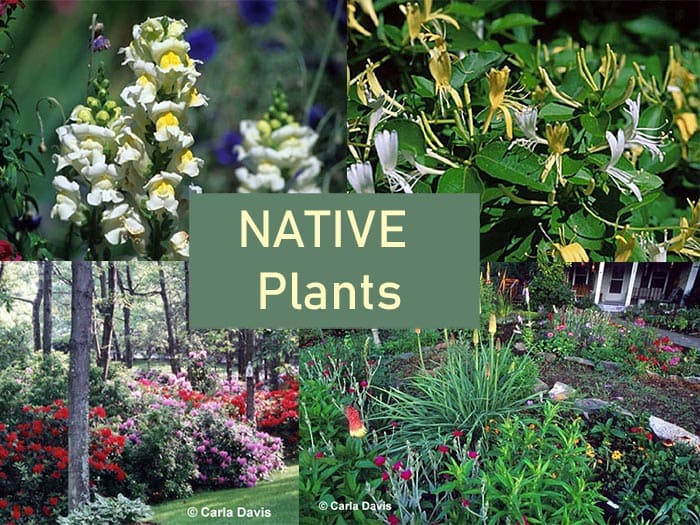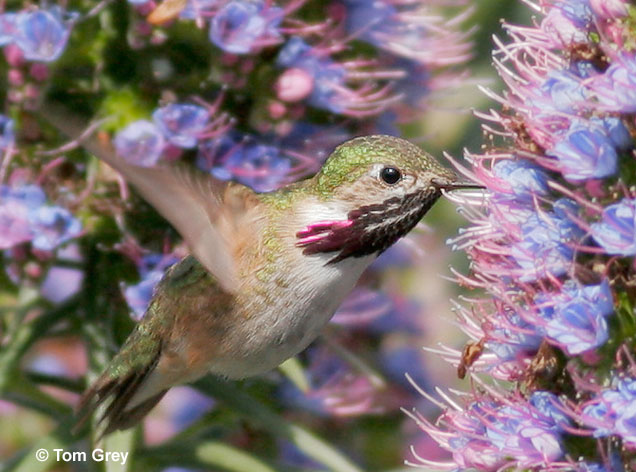
Montana Plants for Wildlife Habitat & Conservation Landscaping
Do you enjoy observing nature…hearing the song of the chickadee…watching hummingbirds fill up on nectar from trumpet vines…listening to the chattering of squirrels…seeing the beauty and grace of a monarch butterfly perched on a milkweed… experiencing the antics of a Mockingbird…the cooing of the Mourning Doves…the swiftness of the Cottontail…and the brilliance of a Cardinal or Baltimore Oriole?
If the answer is “yes”, you’ll probably want to landscape your property for wildlife so you can experience even more from Mother Nature by attracting more wildlife to your property.
Wildlife doesn’t just randomly appear in a given area. It is there because of favorable habitat. The essential elements that you must provide in your habitat are food, water, cover and a place to raise a family. To attract the most wildlife, you need native trees, shrubs, groundcover, vines and wildflowers, many of which will provide food and shelter.
Native or indigenous plants naturally occur in the region in which they evolved. They are adapted to local soil, rainfall and temperature conditions, and have developed natural defenses to many insects and diseases. Because of these traits, native plants will grow with minimal use of water, fertilizers and pesticides. Wildlife species evolve with plants; therefore, they use native plant communities as their habitat. Using native plants helps preserve the balance and beauty of natural ecosystems.
Remember the function served by plants and structures is more important than their appearance. In other words, don’t base your planting decisions solely on what a plant looks like. Following are WindStar Wildlife Institute’s plant recommendations for wildlife habitats in Montana:
Trees
Subalpine Fir; Rocky Mountain and Bigtooth Maple; Mountain and Paper Birch; Rocky Mountain Juniper; Engelmann Spruce; Limber, Lodgepole and Ponderosa Pine; Quaking Aspen; Wild Plum; Douglas Fir; Peachleaf Willow

Hummingbirds are very common in Montana.
Shrubs
Mountain Alder; Western Serviceberry; Juneberry; Bearberry; Prairie Sagewort; Black, Big and Great Basin Sagebrush; Bog Birch; Mountain Balm; Mountain Mahogany; Rabbit Brush; Red-osier Dogwood; Black Hawthorn; Spiny Hopsage; Swamp Laurel; Bear Berry Honeysuckle; Creeping Barberry; Pink Mountain Heather; Sand Chery; Chokecherry; Smooth Sumac; Golden, Wax and Western Red Currant; Western Wild Rose; Grayleaf Red Raspberry; Blue, Scarlet and Black Elderberry; Buffaloberry; Western Mountain Ash,; Snowberry; Mountain Snowberry
Wildflowers
Sand and Fragrant Verbena; Red Baneberry; Rocky Mountain and Scarlet Columbine; Purple Aster; Indian Paintbrush; Golden Aster; Rocky Mountain Beeplant; Tickseed; Bunchberry; Narrow-leaved and Purple Coneflower; Fireweed; Woolly Sunflower; Prairie Rocket; Spotted Joe-Pye Weed; Prairie Smoke; Bush Morning Glory; Dotted Blazing Star; Gayfeather; Columbia, Oregon, Wood and Wild Tiger Lily; Cardinal Flower; Silvery, Meadow and Silky Lupine; Golden, Lewis and Great Purple Monkey Flower; Wild Four O’clock; Wild Bergamot; Giant Evening Primrose; Sand, Whorled, Red, Phlox, Rocky Mountain, Hot Rock and Shrubby Penstemon;Purple Prairie Clover; Prairie Coneflower; Prairie Goldenrod
Vines
Clematis, Woodbine, Riverbank Grape
Grasses
Indian Ricegrass; Sand and Little Bluestem; Sideouts Grama; Switchgrass; Sand Dropseed; Thickspike, Stream Bank and Bluebunch Wheatgrass; Buffalo Grass; Blue Wild Rye; Junegrass, Blue Gramma; Bluejoint Grass; Prairie Sandreed; American and Tall Mannagrass; Sweet Grass; Prairie Cordgrass
Montana can be divided into two geographic areas in general. The eastern 60% of Montana is covered by the Great Plains and the western 40% of Montana is the Rocky Mountain Region. The Great Plains are made of high, gently rolling land interrupted by hills and wide river valleys including the Yellowstone and Missouri Rivers. Groups of mountains spring up from these plains; the Bear Paws, Big Snowy, Judith, and Little Rocky Mountains. In the southeast, badlands swept by wind and water showcase beautiful natural stone columns of red, yellow, brown, and white. The Rocky Mountain Region of Montana is covered by flat, grassy valleys and mountains blanketed in fir, spruce, pine and other evergreens. The southwest valleys are from 30 to 40 miles wide while the valleys in the north are narrower; from 1 to 5 miles wide. Many of the mountains are covered with snow for about 8 to 10 months of the year and a few active glaciers dwell in the higher altitudes. The Montana Rocky Mountains are known for their clear, cold lakes.
There are more than 50 mountain ranges in this region. Unfortunately, the Rocky Mountain Region is always in danger of earthquakes due to the faults that run through the area. The Montana Native Plant Society can provide lists of local plants.
For more information on improving your wildlife habitat, visit the WindStar Wildlife Institute web site. On the web site, you can also apply to certify your property as a wildlife habitat, register for the “Certified Wildlife Habitat Naturalist e-Learning course, become a member and sign up for the FREE WindStar Wildlife Garden Weekly e-mail newsletter.

